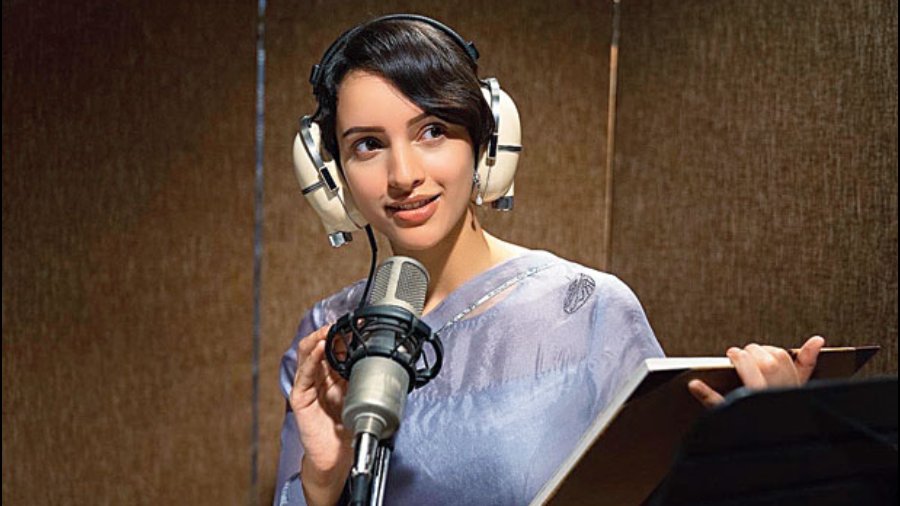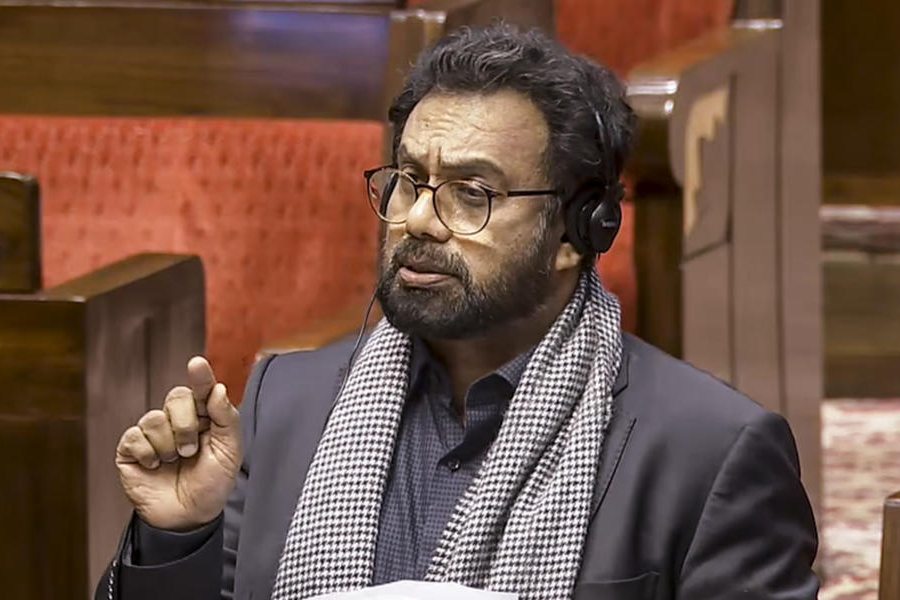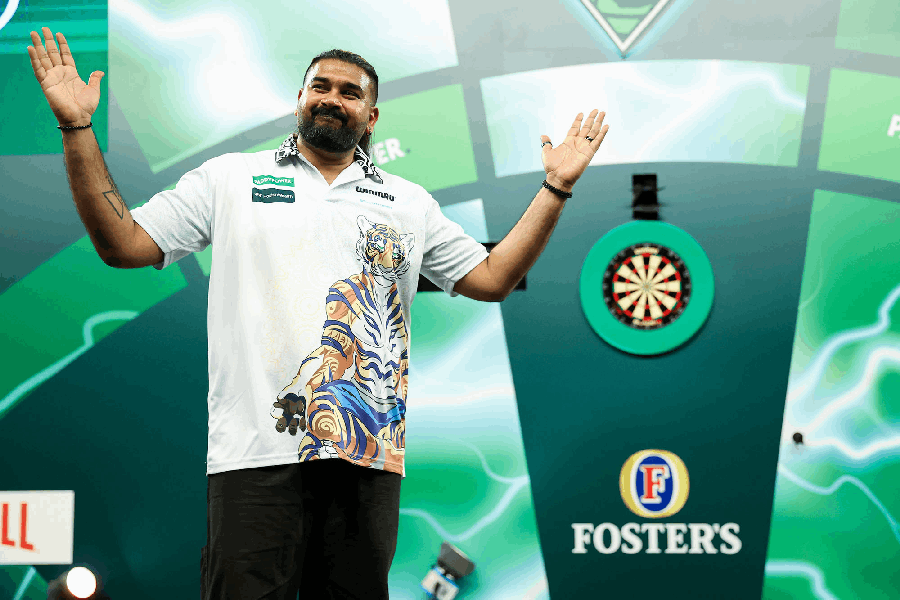Two years ago, Anvitaa Dutt crafted a powerful feminist fable set in period rural Bengal. Bulbbul, with a scene-stealing Triptii Dimri as the titular protagonist, hit home with a story both horrific and heartbreaking, with Anvitaa emerging as a new voice to watch out for.
That has simply been reinforced by her sophomore directorial Qala, now playing on Netflix, in which Anvitaa merges her trademarks of the fantastical and real, to give us a film that is rich in look and sound, and once again with Triptii in the lead, a scathing but subtle look at mental health, sexual abuse and toxic filial ties. The Telegraph ventured deep into the world of Qala with Anvitaa.
You had told me that the image of two tiny feet in a dream is what prompted you to write Bulbbul. What was the genesis of Qala?
There was this feeling that I had that I wanted to tell a mother-daughter story. I wanted to tell a story about validation. I felt that everyone shows the sanctified mother and we always have mother-son stories and father-son stories and father-daughter stories, but mother-daughter stories are only there in our myths and our folktales.
And then I got this image of a girl looking very frightened with snow falling on her. I always get an image first, that’s my starting point. Then the story started taking shape. I started writing in longhand and I touched upon a young girl and the void, the black hole that exists in her life in the shape of a missing brother.... I was flowing with that story on paper, and then I happened to meet my friend Vishal Dadlani (music composer) for coffee and we were chatting about music and old songs.... He started singing a song from the ’30s. I told him that growing up, we used to have a record player and we had a vinyl on whose cover were the words ‘When Melody Was Queen’. In it, there were all these songs from the ’30s and ’40s and it was so interesting for me to know that the vinyl was ‘given’ the feminine gender. When I was a lyricist, I was the sole woman in the field, so much so that my gender was attached to my profession... I was called a ‘female lyricist’ and not just a ‘lyricist’.
So we spoke about all this, and also what it must have been like for women at that time. It’s hard enough now, so I can’t even imagine what it must have been like then. I left that meeting and as I was driving back home, the threadbare, cobwebby idea that I had, kind of solidified.
I then had a story about a singer in the 1930s who the world fawns over but who seeks validation from her mother. Also, I wanted to talk about how ambition for a woman always becomes a bad thing. The fact that Qala (played by Triptii Dimri) owns her ambition becomes a path that is fraught with danger. The choices that she makes... she’s always on the edge of falling. So all these things actually gave me the idea of the film.

There is a painting called ‘Still Life with Hazel-nuts’ which provided the palette for the design of the mountain house... beautiful, deep dark moss greens, lots of shades of blacks, gold and copper. The thing with Dutch Golden Age is that there is an element of decay that they show, and I wanted it to feel like a space that doesn’t have much air in it for Qala to breathe in
What is it about the fantastical that feeds your creative soul so much?
When I was young, I would read everything there was. I had access to a library whichever cantonment my dad was posted in and, of course, the school library. I was very genre-agnostic... I would read from the ‘A’ section of the library right down to the ‘Z’ section. I discovered Bram Stoker’s Dracula at some point and I was just blown away. I was like, ‘Oh my God! This is possible... these stories are there.’ At that age, I was fascinated to find a book that didn’t follow the traditional rules of structuring... that’s because the narrative keeps changing.... I think I found my genre with Dracula.
Till I was about 19 or 20, I was reading everything, but gravitating towards fantasy. We have had cautionary tales back from when the old tradition of storytelling was prevalent. To engage in a world that is totally unfamiliar and unreal, one has to ensure that one’s emotions and characters are authentic. You will buy into the fantastical elements in a story only when the story is true. It has to be authentic at a subatomic level. The skill that is required to do that has always fascinated me.
Mainly because I have read so much I am grateful that I have been blessed with a vivid imagination. And when you have an imaginative mind, you enjoy pushing the limits with it. Also, to depict something brutal, I will show something lyrical.
In Bulbbul and now in Qala, what’s the Anvitaa Dutt key to presenting such hard-hitting themes with so much subtlety?
When you raise your voice and talk about something that’s important, no one really listens. You are just outshouting each other, and at the end of the day, it’s just noise. But when you speak softly, people lean in to listen, they pay attention. So, I speak softly (smiles).
In Qala, Jagan (played by debutant Babil Khan) says, ‘Andar kuch toot gaya hain.’ Is that how one can best describe the characters that you write?
Yes, I agree with that. These are broken people, but aren’t we all? It’s a simple enough line and I am so glad it caught your attention. The simplicity of the line hides a difficult truth. I have dealt with depression in the past and that is exactly what it feels for all these characters... they are crumbling, keeling over, falling....

Anvitaa Dutt
Your films have a distinct personality, in terms of look and sound. Qala scores high on both aspects. What were your influences?
When I first spoke to Siddharth Diwan (cinematographer) and Meenal Agarwal (production designer), because this is a period film and was set in the mountains, I wanted to go towards the Dutch Golden Age, in terms of architecture. I named her (Qala’s) mountain house as ‘The House of Oppression’ and her future house in Kolkata as ‘The House of Delirium’. As I was speaking to Meenal about the theme of delirium she suggested the use of Art Nouveau. Dutch Golden Age is what I leaned on the most, with the house referencing Rembrandt’s paintings. We had fun with that.
There is a painting called ‘Still Life with Hazel-nuts’ which provided the palette for the design of the mountain house... beautiful, deep dark moss greens, lots of shades of blacks, gold and copper. The thing with Dutch Golden Age is that there is an element of decay that they show, and I wanted it to feel like a space that doesn’t have much air in it for Qala to breathe in. It has high ceilings and all of that, but the air doesn’t move.
The music... (Amit) Trivedi has done such an incredible job! And, of course, all my lyricist friends who agreed to do one song each. The music came from the film. I narrated the film as I saw it, with each song coming in as part of the storytelling. My brief to them was to follow either Qala’s mind or heart, one of the two.
We didn’t deliberately create old-fashioned songs. The idea was to approach it from the point of view of seeing what instrument was used in the 1930s and then use it. The script, the situations, the feeling is what they followed. As a lyricist, the words I often heard were ‘accessible’ or ‘popular’. With Qala’s music, I was like, ‘Yeh dono cheezein nahin sochni hain.’ What we wanted to use was the truth of the character, the truth of the moment, the truth of their emotions.










